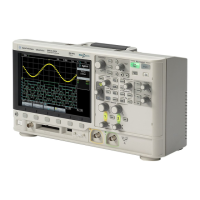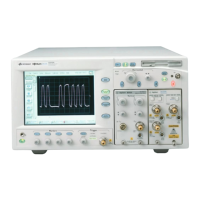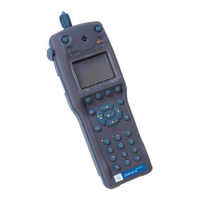Capturing Data 3
Agilent 1000B Series Oscilloscopes User’s Guide 69
So, in practice, an oscilloscope’s sample rate should be four or more times
its bandwidth: f
S
=4f
BW
. This way, there is less aliasing, and aliased
frequency components have a greater amount of attenuation.
See Also Evaluating Oscilloscope Sample Rates vs. Sampling Fidelity: How to
Make the Most Accurate Digital Measurements, Agilent Application Note
1587 (http://cp.literature.agilent.com/litweb/pdf/5989- 5732EN.pdf)
Oscilloscope Rise Time
Closely related to an oscilloscope’s bandwidth specification is its rise time
specification. Oscilloscopes with a Gaussian- type frequency response have
an approximate rise time of 0.35/f
BW
based on a 10% to 90% criterion.
Figure 27 Sample Rate and Oscilloscope Bandwidth
f
S
f
N
f
S
/4
-3dB
Attenuation
Aliased frequency
components
Frequency
Limiting oscilloscope bandwidth (f
BW
) to 1/4 the sample rate (f
S
/4) reduces
frequency components above the Nyquist frequency (f
N
).
0dB

